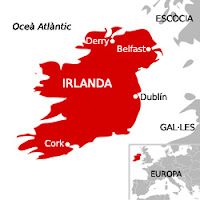La traducció seria " multitud instantània" i consisteix en què un conjunt de persones queden a un lloc en concret per fer qualque cosa tots junts alhora durant un temps breu i en acabar cada un se'n va com si res. Normalment la gent ho fa per divertir-se encara que a vegades es fa per reivindicar qualque qüestió.
Aquest Nadal no us enviaré feina perquè pogueu descansar i tornar amb les piles ben carregades. Però si voleu tenir una positiu extra podeu fer les activitats que trobareu més avall sobre el "flashmob". Aquesta tasca és voluntària i si es realitza es tindrà en compte per a l'avaluació com a feina extra.
Flashmob a la New York Grand Central Station.
La Central Station es troba a Nova York, a la illa de Manhattan rodejada de gratacels. Fou construïda al segle XIX i la seva construcció fou una revolució la qual es comparà amb la torre Eiffel. Entre altres materials compte amb acer i vidre i té uns grans ventanals per on passen els raigs de llum, a més a més una espectacular cúpula en el seu interior. És l'estació més famosa de NY on cada dia passen milers de persones.
Flashmob a la Liverpool Street Station.
* Aquest video pertany a una companya publicitària de T-Mobile, un operador europeu de telefonia mòbil.
Liverpool és una ciutat anglesa que es troba a 336 km al nord-oest deLondres. Al segle XVII i XIX va ser un dels ports més importants del món degut a la migració entre Europa i EEUU, les mercaderies amb les Indies Occidentals (Carib avui en dia) i al tràfic d'esclaus. Avui en dia es coneix sobretot per ser la ciutat on es feren famosos els Beatles als anys '60 i pel seu equip de futbol.
Flashmob a un concert de Black Eyed Peas a Chicago.
Aquesta cançó amb flashmob està presentat per la conegudíssima presentadora nord-americana Ophra Winfrey. De fet aquesta dona és molt més que una presentadora de televisió, també és productora de cinema, actriu, crítica de llibres i empresària.
Chicago és una de les ciutats més importants d'EEUU i té uns 3 milions d'habitants. Es troba als peus del gran llac Michigan (al nord-est del país)i pertany al estat d'Illinois. És coneguda com la "Windy city" (la ciutat del vent) perquè en fa molt. Aquest ciutat té el gratacels més alt d'EEUU que es diu Sears Tower. La Sears Tower consta de 108 pisos, fa 442 metros i fou construïda al 1973. De Chicago és molt característic el seu metro elevat on els trens van per sobre d'uns ponts i també l'equip de bàsquet Chicago Bulls.
AQUÍ TENIU LES PREGUNTES PER A RESPONDRE I ENTREGAR.
Me les podeu enviar per correu electrònic a la següent adreça mfballester@iesmarratxi.org o en mà el primer dia de classe després de vacances.
0. Què és i en què consisteix el flashmob?
1. A quina part de Nova York es troba la Grand Central Station?
2. Quan es va construir aquesta estació?
3. Copia o calca un mapa dels Estats Units i marca la ciutat de Nova York i Chicago.
4. Quan i per quins motius Liverpool va ser un dels ports més transitats del món?
5. Quin grup de música va néixer a Liverpool?
6. Copia o calca un mapa d'Anglaterra i marca les ciutats de Londres i Liverpool.
7. Cerca a internet el nom del programa que fa na Ophra Winfrey o el nom d'una
pel·lícula que ella hagi produït.
8. Amb quin altra nom es coneix Chicago?
9. Què és el Sears Tower?
10. Quines dues caraterístiques (segons el text) té Chicago?
ESPER QUE TENGUEU UNES VACANCES FANTÀSTIQUES!

































